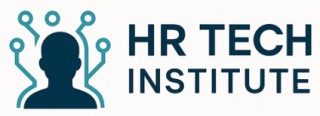The Role of HR Tech in Identifying Employee Weaknesses
Assessing Areas of Improvement
In the realm of Human Resources, understanding and addressing employee weaknesses has become more nuanced with technological advancements. HR tech plays a vital role in pinpointing areas where team members may need help. By utilizing effective techniques for high-quality evaluation, organizations can analyze employee weaknesses alongside strengths to create a holistic understanding of employee performance and growth potential.
Technology-driven techniques, such as strengths tests, help in identifying the specific strengths and weaknesses an employee exhibits. This data-driven approach offers examples of how skills gaps can hinder individual and team productivity. Weaknesses, like poor time management or underdeveloped communication skills, often reflect in an employee's work and task management. Such insights enable HR leaders to design targeted development plans aimed at performance improvement.
Turning Data into Actionable Insights
One of the core functions of HR technology is transforming the evaluation data into actionable insights. Performance reviews, supplemented with continuous feedback, provide a comprehensive view. By monitoring employee performance systematically, HR professionals can tailor development strategies that cater to individual and team needs. This not only enhances the employee experience but also aligns with performance management objectives to optimize productivity and job satisfaction.
Common Employee Weaknesses and Their Impact on Productivity
Identifying Common Areas of Improvement in the Workforce
Understanding employee weaknesses is crucial in shaping a productive work environment. Weaknesses can appear in various forms, affecting not only the individual employee but also the entire team's dynamics and overall performance. From lack of communication skills to poor time management, these deficiencies can hinder the progress of tasks and reduce an employee's contribution to team efforts. Employers need to recognize how these weaknesses impact productivity. Acknowledging these areas of improvement allows the development of targeted strategies that help employees enhance their skills, ultimately leading to better performance. Common challenges often observed include issues with problem solving, decision making, or trouble adapting to new technologies. For example, an employee with limited communication skills may struggle to effectively convey ideas, causing misunderstandings with team members. Others may face difficulties in performance reviews, unable to translate feedback into actionable improvements, further impacting their growth and contribution to the organization. Using performance management tools can help identify these weaknesses early on and address them before they escalate into larger issues. To illustrate, some companies employ strengths tests to assess both strengths and weaknesses. This aids in creating personalized development plans for employees. These plans focus on honing their strengths while addressing weaknesses with clearly defined goals and support systems. The role of managers is pivotal in providing consistent feedback. While performance reviews play a significant role, continuous feedback ensures employees are aware of their progress and areas needing improvement. By openly discussing weaknesses, employees can better allocate their time and resources to work towards improvement, fostering a culture of transparency and growth. Ultimately, helping employees recognize their weaknesses encourages proactive skills development, enhancing their overall experience in the workplace. As a result, employees become more engaged, contributing effectively to customer success and team achievements. Discover how to address these challenges through various strategies on our resource page.Leveraging Technology to Address Skill Gaps
Utilizing Tech to Bridge Skill Gaps and Enhance Workforce Capabilities
Addressing skill gaps in the modern workplace is a critical task and leveraging technology offers substantial benefits. Advanced HR tech solutions facilitate the identification of these deficiencies, pinpointing where employees may need extra support or development. By doing so, companies can formulate targeted strategies for improvement. One efficient method is through personalized development plans. These plans utilize data from performance reviews, employee feedback, and observed performance issues to craft specific recommendations for skill enhancement. Tech-driven assessments such as strengths tests can provide insights into both employee strengths and weaknesses, helping to tailor development initiatives. For instance, if an employee shows potential in decision making but lags in time management, a focused training program can be designed to bolster their abilities. Another significant feature of modern HR technology lies in its ability to offer problem-solving exercises. These exercises can be integrated into daily tasks or used as part of development sessions, accommodating various learning styles among team members. Such tools not only focus on weaknesses but also celebrate employee strengths, encouraging a balanced approach to professional growth. Communication skills are also a crucial area for improvement. With digital solutions, employees can partake in workshops or online modules that aim to elevate their interactions with customers and colleagues. This is particularly valuable for fostering seamless team dynamics and enhancing customer success. Moreover, implementing tech solutions saves valuable time for HR teams, allowing them to concentrate on higher-level tasks like strategic planning and employee management. In essence, when technology is effectively combined with insightful feedback and performance management, it leads to an all-encompassing approach for evolving a competent and cohesive team. For a comprehensive exploration of enhancing the employee experience, even from the onboarding phase, you might consider crafting the perfect welcome gift for new employees. It serves to seamlessly integrate new hires into the company's culture, furthering the opportunity for initial skill assessments and development tracks tailored to optimize future performance.The Importance of Continuous Feedback and Performance Monitoring
Continuous Feedback Cultivates a Culture of Growth
In any workplace setting, effective communication is at the heart of understanding and addressing employee strengths and weaknesses. Regular performance reviews and degree feedback mechanisms can significantly enhance the employee experience by providing concrete examples of areas for improvement. Feedback shouldn't be confounded with criticism; instead, it's an opportunity for growth and improvement. Incorporating continuous feedback as part of your performance management strategy ensures employees are aware of their strengths and how these can be leveraged, as well as their weaknesses and the necessary steps for improvement. When management provides consistent feedback, employees have a clearer path to development, which in turn boosts team productivity and individual job satisfaction. Here’s how you can maximize the benefit of continuous feedback in your workplace:- Timely and Constructive Feedback: Ensure that feedback is regular and timely. Quick feedback on specific tasks helps employees adjust quickly and effectively.
- Focus on Strengths and Weaknesses: Feedback should highlight both areas of improvement and strengths. This balanced approach helps in nurturing employee strengths while addressing weaknesses effectively.
- Encourage Open Communication: Cultivate an environment where employees feel comfortable seeking and providing feedback. Open lines of communication can significantly improve team dynamics and overall morale.
- Develop Personalized Development Plans: Collaborate with employees to create development plans that focus on their unique skill sets and areas needing improvement. Personalized plans show employees you are invested in their growth.













